Rethinking is required Part 2: Florida Market Tour Recap and Sububan vs. Urban land use paradigms
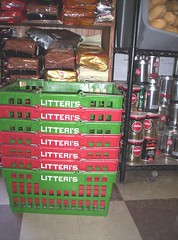 So Elise (Frozen Tropics and I conducted our third Florida Market tour on Saturday.
So Elise (Frozen Tropics and I conducted our third Florida Market tour on Saturday.We ended up with 17 attendees, plus 2 or 3 babies, and ourselves. The baby carriages required a slight change in logistics, since we needed to use ramps in one section of the market, but at least ramps are present.
Andrew Lightman joined us from the Hill Rag newspaper group and he knew a number of specifics about the market area's history that we'll incorporate in future tours.
Afterwards a few of us ate our Litteri's submarine sandwiches on the grounds of Gallaudet University under some shade trees on grounds that had been designed by famed landscape architect Frederick Law Olmstead.
Elise recounted a conversation she had the previous night with some friends, one of whom averred that tearing the market area down in favor of big box stores like Barnes & Noble and Bed, Bath and Beyond would be a good thing.
Well, I've argued plenty that I disagree, but it is important to think about this a little more deeply because it's another example of the suburban land use and development paradigm being applied inappropriately to the city, which requires and is built around an urban design paradigm.
One of the problems with suburban retail development is deconcentration and overbuilding. This is why in many places in the country you have dead malls and strip shopping centers that have been supplanted by newer venues. In this region, these spaces tend to get redeveloped, although not necessarily quickly. In other places, they stay empty for years.
In any case, city urban retail best benefits from agglomeration--concentration not deconcentration.
One of my complaints about the H Street Strategic Development Plan is that it assigned the 600 block to "urban living" rather than "retail." Yet this block is the best situated on the corridor to accommodate big box uses along the lines of what is desired by Elise's friend.
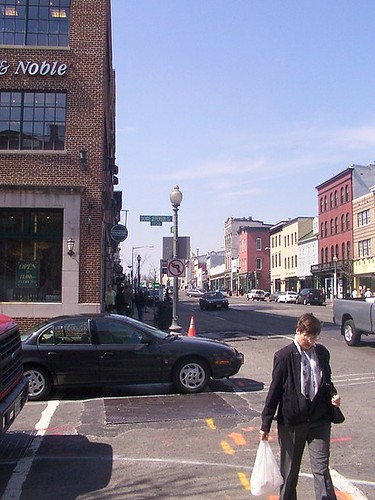 In Georgetown DC, a Barnes & Noble moved into an old warehouse-manufacturing type site.
In Georgetown DC, a Barnes & Noble moved into an old warehouse-manufacturing type site.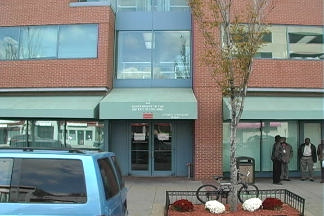 Office building, south side of H Street's 600 block.
Office building, south side of H Street's 600 block.Such uses could easily be inserted to warehouse-like office buildings on the south side of the 600 block or in the vacant land or boxy structures on the north side of the 600 block.
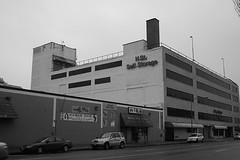 H Street Self Storage photo by Elise Bernard.
H Street Self Storage photo by Elise Bernard.Redevelopment of the parking-fronted H Street Connection could also accommodate larger scale uses.
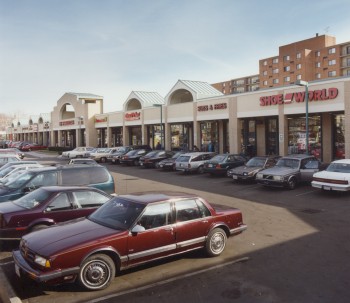 H Street Connection.
H Street Connection. But same with the Hechinger Mall area--not just the mall, but some of the parcels at or along Bladensburg Road.
Such a course, strengthening retail along the corridor (hopefully complemented with the development of a successful assistance program to help strengthen and develop independent retail) would make the H Street area once again one of the region's resurgent retail (and entertainment) destinations.
Meanwhile, the Florida Market area could become a revitalized food-oriented retail and wholesale district and destination in its own right, complemented by redevelopment in the area of the New York Avenue subway station, including the Uline Arena.
While I would rather see it be converted into a music venue such as what I call the "XM Coliseum" associated with the nearby XM Satellite Radio Network,
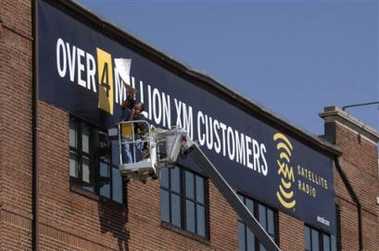 AP photo by John Harrington.
AP photo by John Harrington.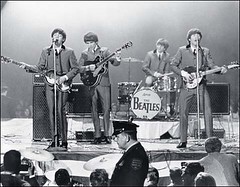
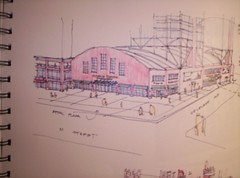
the developer is seeking a supermarket, which does complement the Florida Market area (and will increase traffic on M Street I suppose, but will also increase the value of the houses even further in the northern part of the neighborhood).
As was discussed in one of the side conversations on Saturday during the tour, the market is a food distribution center, for the most part (with the exception of a few vendors in the DC Farmers Market building) the vendors are not farmers growing food and bringing it to market. There are not vendors of organic foods.
But there is no reason, if there existed a merchants association and a focused revitalization effort, that one couldn't work towards including such options in a food district. That's why I have suggested for some time that the people working to create an H Street Food Cooperative should consider locating in the market area.
Now the second comment about Elise's friend and her desire for big boxes in the city. Everyone seems to want stores like Bed, Bath and Beyond and Target, but there is only so much demand for their wares because most of the demand comes from new households.
While a fair number of people are moving to the city, is there enough demand created even so to support multiple branches of such stores.
I am not sure.
The Saturday Post had an interesting story about the downsizing and/or closure of furniture stores in the Virginia suburbs, "Sagging Times at Furniture Showrooms," subtitled "Slowing Home Sales, Changing Tastes Put Squeeze on Independent Sellers." That's an indicator of changes in the market, as well as reduced demand. It's something one needs to think about before demanding more and more Bed Bath and Beyond and similar stores (i.e., Gallery Place, Columbia Heights, according to an interview I read in Roll Call, with Adrian Washington of the Anacostia Waterfront Initiative, it's the kind of store he wants for his shopping mall vision of the Anacostia Waterfront, I'm sure the people in Ward 7 working for the redevelopment of Skyland Center want a BB&B to go along with their desired Target, etc.). Although, the stores closing are small independents or regional chains. Maybe Elise's friend is at the cutting edge of the trend...
 Bill Diffee Jr., owner of Colony House in Arlington, recently closed a second store in Centreville. Photo Credit: By Rich Lipski/The Washington Post.
Bill Diffee Jr., owner of Colony House in Arlington, recently closed a second store in Centreville. Photo Credit: By Rich Lipski/The Washington Post.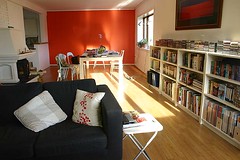 Apartment styling. Flickr photo by Astrid.
Apartment styling. Flickr photo by Astrid. 3. Speaking of furniture, a developer I know who was interviewd for the NoMa small area plan study suggested that one way to develop a retail district along 1st Street NE as suggested in the plan would be to focus on hip furniture and home furnishings. Places like Pompanoosuc Mills, Design Within Reach, and other specialty stores (in the greater area there are two extant lighting-electrical stores already). It wouldn't be at the same price point as the "oh so dear" Cady's Alley in Georgetown. It could also work with one of my ideas of developing a building trades and preservation arts training program that would also work to (re)develop craftwork-artisan skills around carpentry, glass, cabinetry, furniture building, etc. (There is a woman who makes furniture in a studio in the General Typography building on New York Avenue, etc.)
I thought it was a good idea, but he says they laughed him out of the room...
Things to think about.
Index Keywords: urban-revitalization



0 Comments:
Post a Comment
<< Home